2018 Demonstrators
[wptab name=’John Jordan’]
John Jordan
johnjordanwoodturning.com
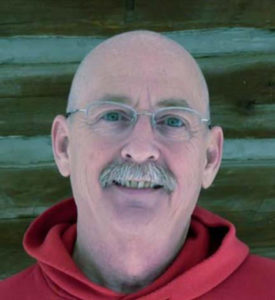
|
| Hollow Turning
Making an elegant and refined hollow form using green wood as the material. Wood selection, orientation and tool use will be demonstrated.
Carving/Texturing on Bowls and Vessels
A demonstration of various surface treatments using a variety of tools and techniques. Learn to add a little interest to your turnings, from pens to hollow forms.
Turned Teapots
Making a teapot with an integral spout from green wood. Carving, finishing and details will be shown.
The Aesthetics and Properties of Wood
An in-depth discussion of wood, using green wood as a material. Dealing with the issues of cracking and distortion without mystery or complicated methods. Orienting the wood for maximum effect.
Bio
John Jordan is a woodturner from Cane Ridge (Nashville), Tennessee. Known primarily for his textured and carved hollow vessels, John has been featured in nearly every major turning exhibition the past twenty years. His work has received numerous awards, and is in the permanent collections of many museums and corporations, including the Renwick Gallery of the Smithsonian, the High Museum of Art in Atlanta, the American Craft Museum in New York City, the White House in Washington, the Los Angeles County Museum of Art, the Mint Museum of Craft + Design in Charlotte, the Fine Arts Museum in Boston, and the Detroit Institute of the Arts and the prestigious Victoria and Albert Museum in London, England.
John is a frequent writer of woodturning articles, has produced several instructional DVDs, and has taught in eight countries and most of the US including more than twenty classes at Arrowmont. |
[/wptab]
[wptab name=’Michael Kehs’]
Michael Kehs
michaelkehswoodworks.com
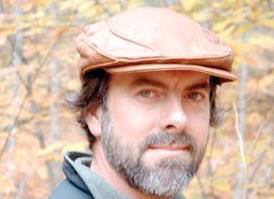
|
| Surface Embellishments
This demonstration is going show different ways to treat the surface of a turned object. After a piece is turned you can decorate it with textures, colors, and carving. This can be done with many tools including the use of burning pens, carving tools, and vibrating tools.
Participants will learn the use of different tools to create my style of texturing, which Michael calls burn texturing. This will include the use of pyrography with a burning pen and burning through friction. He will cover some power carving and vibrating textures. Lastly, I’ll show some coloring techniques.
Carving for Turners
Michael will show the use of power carving tools to create life like leaves and other items of the natural world.
Attendees will see how to layout shop made templates for design. They will learn the techniques of power carving that he uses to create pierced carved turnings.
Celtic Drinking Horn
Michael will show the proper turning techniques to create my version of a 9th century northern European drinking vessel. This will include the actual turning, sawing apart, regluing, and carving the vessel in to shape.
The attendees will learn the steps involved in creating a unique turning project. Turning a shape that works for creating a horn shaped drinking vessel will be the first step. Then he will go over the process for cutting apart and reassembly of the horn, which will include carving the inside and outside shape. Finally, he will show some texturing techniques.
Bio
Michael, from Bucks County, Pennsylvania, has exhibited in several US shows, including Challenge V: International Lathe Turned Objects Show, the National Speleological Society’s Fine Art Salon and has a piece in the permanent collection of the Woodturning Center in Philadelphia. He turned an ornament for the Clinton White House during the Year of the Craft. Michael has won awards in many art shows and craft shows locally and nationally, including several Best of Show awards. He has also judged many wood carving shows and has written for the American Woodturner, the journal of the American Association of Woodturners and Woodcraft Magazine. Active in both local and national turning and carving clubs, he also demonstrates and teaches both woodcarving and woodturning in his studio. Michael has been turning and carving since 1980, and has studied anatomy sculpture under Eugene Daubs through the Tyler School of Art. His work has gotten him invited to Australia and Turkey to participate in international turning events. |
[/wptab]
[wptab name=’Malcolm Tibbetts’]
Malcolm Tibbetts
tahoeturner.com
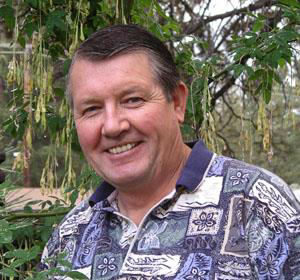
|
| Intro to Segmented Woodturning
This demo will explain the design process and the cutting, sanding, gluing, turning, and finishing steps involved in a typical stacked-ring vessel. Stacked-ring construction is the cornerstone of most segmented work. A clear understanding of these techniques is essential to segmenting success.
Compound Miters and Ribbon Construction
Malcolm will take the mystery out of compound-mitered angles. In addition to using staves to build vessel forms, the use of staves in ribbon construction will be profiled. I’ll offer a solution to the problem of avoiding cross-grain construction when working with staves.
Tubes, Tangles, and other Fun Stuff
This session will explore the possibilities of treating segmented rings as if they were individual segments (tapering rings). Many techniques of tubular construction will be shown including the creation of “orderly tangles.” This demo is designed for the semi-experienced segmenter.
Bio
Segmented woodturning is an art form with few limitations. By combining components, Malcolm can create just about any shape or size and by arranging different wood species, Malcolm can create just about any type of surface design. There are few art forms with this much freedom. This lack of restriction keeps his mind engaged contemplating the possibilities. Long before he has finished one piece, his mind is busy designing and solving the technical challenges of his next project. He has always loved working with wood and this art form gives him the opportunity to work with woods from around the world. It thereby gives him the opportunity to share these wonderful materials with many people. Beautiful wood is almost a magical substance; gallery visitors experience an uncontrollable urge to touch the surfaces that he has created using these treasures of nature. Many designs require innovative assembly solutions, much like puzzle solving; and just like the joy of solving a puzzle, there is great joy in inventing assembly techniques. He does what he does because “it’s fun” – the designing, the joy of working with wood, the puzzle solving, and the inter-action with other people. |
[/wptab]
[wptab name=’Beth Ireland’]
Beth Ireland
bethireland.net
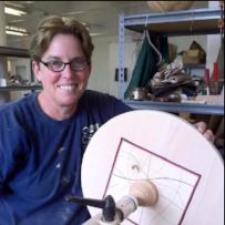
|
| Turning Outside the Box
This demo integrates the Lathe and the bandsaw to create a variety of boxes and decorative platters. Attendees will learn to construct a bandsaw box that can be turned on the lathe in a variety of ways. Strategies for form and decoration will be discussed. The rotation will end with participants learning how to take these techniques and utilize them to make creative platters that look like inlay. Bandsaw safety will be stressed. This demo is geared toward all levels.
Sculptural Stringed Instruments from the Lathe
You do not need to be a musician to create great sounding instruments; you just need to know proper layout and materials. This rotation will teach participants how to use the lathe to create stringed instruments, such as guitars and ukuleles and tenor guitars. The focus will be creating the neck of an instrument, utilizing the technique of offset turning to sculpt the surface. Examples of segmented and faceplate turnings for the bodies will be shared. This demo is open to all levels.
Turning with Your Mind
Do you want to be more creative with your work? What is good achieving a certain skill level if you do not know what you want to make? This demo demystifies the creative process through slide presentation and audience participation. Beth will break down the creative process into and easy to understand 5 column chart you can go to anytime you need to come up with and unique idea. It is so much easier than you think, learn the secret of the creative process. This demo is great for all levels.
Turning and Carving
Did you ever wonder how to carve leaves, make spirals or repeat carved patterns on your bowls and spindles? Carved patterns can be the perfect addition to any, bowl, box or spindle. This demo lays out the order of marking, holding and carving different patterns on your turned objects. Carving tools and sharpening will also be covered.
Turning Simple Offset Boxes
This demo teaches the making of simple off set boxes. The demo introduces proper spindle techniques and the pommel cut which are then combined with the geometry of offset turning to create a variety of useful boxes.
Bio
Beth earned her undergraduate degree from the State University College at Buffalo, and an MFA in sculpture from Massachusetts College of Art and Design. She has been |
[/wptab]
[wptab name=’Art Liestman’]
Art Liestman
artliestman.com
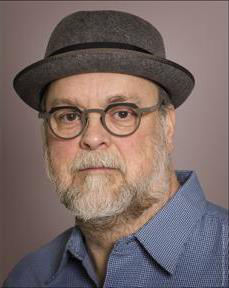
|
| The Lost Wood Process
Art will turn spindle blanks that are made up of three laminated layers. After turning, the middle layer is removed, and the two outer layers are rejoined to give a turned object that isn’t round. More details can be found in my American Woodturner article “Beyond Round: The Lost Wood Process” (August 2012). This should be understandable and within the abilities of any turner.
Therming
Art will discuss the construction of jigs and show how to use them to turn multiple curved surfaces on wood blanks. This is a variation on multi axis turning in which the axis of rotation does not lie within the blank being turned. More details can be found in my American Woodturner article “Beyond Round: Therming” (April 2010). This should be understandable by all, but is more challenging and should only be attempted by the more experienced turners.
Flame texturing of highly figured wood
In turning a small bowl, Art will show his technique for “flame texturing” highly figured wood. I will do the turning live, but the flaming will need to be done by showing videos or still images for safety. The textured wood can either be left “as is” or colored with multiple layers of acrylic paints using a dry brush technique. The demo will involve some turning and an introduction to coloring using acrylics.
Bio
Art Liestman has been making and selling turned objects for about 20 years. He particularly likes making whimsical objects and objects that do not appear to be made on the lathe. Art’s work has been featured in numerous shows and exhibitions, in various magazine articles, and in several books. He has demonstrated at the AAW Woodturning symposium, the Utah Symposium, the French national woodturning symposium, and several regional symposia in North America. He regularly demonstrates and teaches for AAW chapters across North America and has taught longer courses at Arrowmont, and the Escoulen School.
Originally from Kansas, Art has lived in Coquitlam, British Columbia for many years. He is now retired from his career as a university Professor. |
[/wptab]
[wptab name=’Mark St. Leger’]
Mark St. Leger
www.markstleger.com/
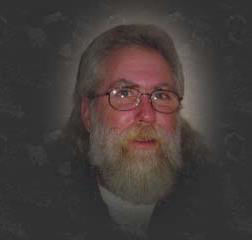
|
| “Rock-A-Bye Box” lidded box
All steps will be covered to create this unique box, turning the box on the bias, special turned jigs to complete the lid and an eccentric finial to top it off. Proper and safe tool techniques and setups will be shared throughout the presentation.
Convex Bias lidded box
The top and bottom of this bias box will be convex, tips will be presented for texture on three sides along with jigs to complete the lid for a gentle rocking box Proper and safe tool techniques and setups will be shared throughout the presentation.
Fun with Spheres
Two spheres will be turned off the 4 needed for this project (2 spheres will be pre-turned due to time restraints of the demo rotation time. I will be using the 3 axis method for turning accurate spheres. A stand to display all 4 spheres together will also be turned. Just another twist on spheres!
Bio
Mark has been an active demonstrator and workshop leader for turning clubs, along with demonstrating at many regional and national symposiums. He is currently on the faculty list of Arrowmont School of the Arts in Tennessee, Appalachian Center for Craft in Tennessee, Peters Valley Craft Center in New Jersey, and the John C. Campbell Folk School in North Carolina. Mark also finds satisfaction in teaching woodturning courses for a local college. His work has been shown at many venues and is in private collections.
Known for his sense of humor and ability to effectively teach a variety of age groups and skill levels, Mark’s teaching techniques are easily followed and incorporate much skill building. His enthusiasm for woodturning has offered him the opportunity to meet a variety of individuals who share his interests in woodturning. Exchanging ideas with woodturners and clubs throughout the world, gives him the opportunity to contribute to the continual process of growth and learning in the field of Woodturning. |
[/wptab]
[end_wptabset skin=”default” location=”top” ]





